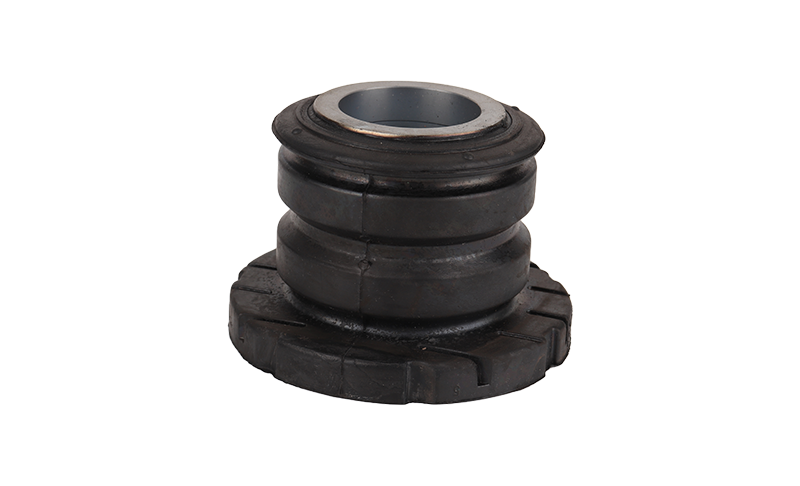Suspension Control Arm Bushing – Enhancing Vehicle Performance and Safety
A Suspension Control Arm Bushing is a crucial component in a vehicle’s suspension system. Its primary function is to reduce noise, vibration, and harshness (NVH) while maintaining proper wheel alignment and handling. Typically constructed from rubber or polyurethane, these bushings are positioned between the control arms and the vehicle’s frame or subframe. Their role extends beyond comfort, contributing significantly to vehicle safety and performance by absorbing shocks and vibrations from uneven road surfaces.
Importance of Suspension Control Arm Bushings
Suspension control arm bushings play a pivotal role in vehicle dynamics. They ensure smooth operation of the suspension, improving both ride quality and control. Worn or damaged bushings can cause to uneven tire wear, steering vibrations, and unusual clunking noises when turning or braking. In some cases, failed bushings can affect braking distance and cornering stability, creating safety hazards.
Material Advancements in Suspension Control Arm Bushings
Recent innovations in materials have improved the durability and functionality of control arm bushings. High-performance bushings now use greasable sintered metal cores or reinforced polyurethane for increased strength under heavy loads. For instance, upgraded bushings for certain passenger and SUV vehicles replace original plastic bearings with metal-based designs, which can endure radial and lateral stress more effectively. Comparative tests show that vehicles using upgraded bushings experience 25% less lateral movement during sharp turns, improving stability and handling.
Rubber bushings remain popular for standard vehicles because they provide a balance of flexibility and shock absorption. Polyurethane alternatives offer enhanced stiffness and longevity but may transmit more vibrations to the cabin. Each material type serves specific vehicle requirements, allowing manufacturers and repair specialists to select bushings based on performance and comfort needs.

Applications Across Vehicle Types
Suspension control arm bushings are essential across a wide range of vehicles, including passenger cars, SUVs, light trucks, and commercial vehicles. In SUVs and off-road vehicles, bushings endure higher stress due to rugged terrain and heavier loads. Regular inspection of bushings ensures that suspension systems function properly, avoiding premature wear on other components such as ball joints, tie rods, and shock absorbers.
In high-performance or sports vehicles, upgraded bushings enhance cornering precision and steering response. Tests on sports sedans indicate that vehicles with reinforced polyurethane bushings maintain alignment over 20,000 miles of varied driving conditions, compared to standard rubber bushings that may require replacement every 15,000 miles. Such improvements directly impact driver confidence and vehicle handling performance.
Market Trends
The global market for suspension control arm bushings is growing steadily. In 2024, the market was valued at approximately USD 2.1 billion and is expected to reach USD 3.5 billion by 2033, representing a compound annual growth rate of 5.8%. Growth is driven by increasing demand for vehicle safety, longer-lasting suspension components, and advanced materials that extend bushing lifespan.
Maintenance of Suspension Control Arm Bushings
Proper maintenance of control arm bushings is vital for ensuring long-term vehicle performance. Regular inspections can identify wear, cracking, or excessive deformation. Early replacement prevents further damage to the suspension system, reducing repair costs and maintaining vehicle safety. Technicians recommend visual checks and manual compression tests during routine servicing to ensure bushings remain effective.
Conclusion
The Suspension Control Arm Bushing is a critical component influencing ride quality, handling, and safety. Advancements in materials and engineering have enhanced durability and performance, enabling bushings to endure harsh road conditions and heavy loads.
Related Products
-
 View More
View More
Industrial Flat Nature Tarp EPDM Rubber Strap with Hooks
-
 View More
View More
100% EPDM 9"/10"/15"/21"/31"/41" Rubber Tie Down Tarp Straps with S Hook
-
 View More
View More
7-wire hook light truck tire chain dobby tensioner
-
 View More
View More
Blue multi- arm tighteners for light truck tire chain with 6 wire hook
-
 View More
View More
JB-21 Rubber Foot Pad, Cargo Bar Pad
-
 View More
View More
Plastic/Rubber Bundled Cargo Stepping Board


